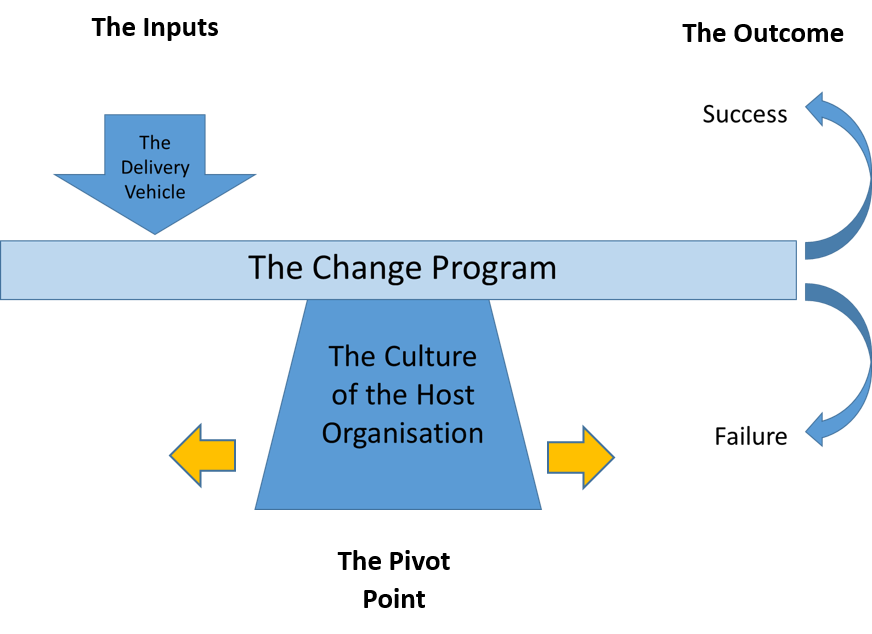The Recipe for a Successful Business Improvement Programme
Here’s the Recipe for a Successful Business Improvement Programme:
1. Delivery: this includes all of the tools and techniques required to install change. The method of delivery also forms part of the delivery vehicle.
2. Cultural Readiness to change: the culture of the organisation that wishes to change forms a fundamental part of the project. In order to achieve and embed a successful change programme, there must be a willingness for the host company to implement, absorb and maintain the program.
The culture of an organisation will, in part, determine the degree of success or failure of any improvement program in the short, medium and long term. However, the organisation’s culture is only part of the jigsaw. The model below demonstrates the composite relationships between the key components of incepting a program for change.
Using the above model, it is conceivable that the culture of the organisation would have a degree of flexibility. Working with and adjusting the delivery vehicle, for example; the program content will allow the organisation’s culture to become more receptive to the process of change. This will have an inherent bearing on the outcome of change. Creating a receptive culture for change is another means of improving success. Working directly with existing culture is key to creating a stable platform for the initial inception of a Continuous Improvement (CI) program. This enables slight adjustment of the ‘pivot point.’ Again this can affect the success of the program. Essentially, there is a close relationship between the way a program is delivered and the culture of an organisation attempting to absorb the program.
Does an organisation need to change its culture in order to maximise change?
When thinking objectively, the real question is: ‘Is the organisation ready for the change program?’. Change is not necessary in many cases, however, it is critical that the organisation’s culture is understood and assessed for its ability to accommodate the CI proposals. Three elements central to this understanding include:
- Objectivity: There should be a clear and concise goal. Successful programs ensure this goal is defined and communicated.
- Cultural Barriers: Cultural barriers should be identified. This can be achieved through gap analysis. Doing so, will shape the execution and delivery of the program, and link the ‘delivery vehicle’ with the ‘culture of the host organisation’ as per the above model.
- Delivery: After the two above facets are explored, the method of delivery should be defined and executed.
Change is required for an organisation to operate in the ‘global village.’ The question, therefore, must be: How do I implement change within the existing culture? The culture will inevitably change as an output of any program which is instilled and endures. So, in the context of a CI program, the programme of change is the cultural change. The execution strategy has to be holistic and sensitive to all of the elements highlighted above.



